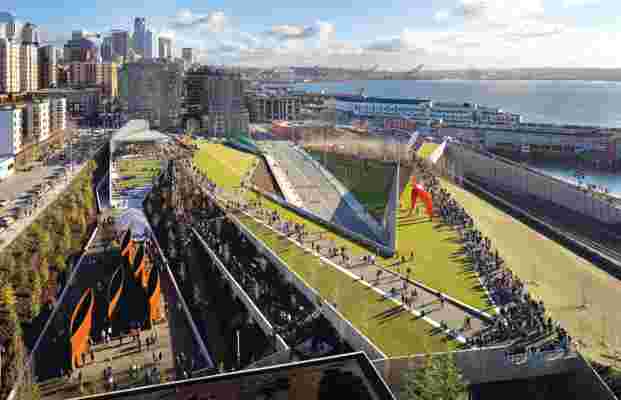For architects working in urban contexts, tabula rasa sites are few and far between. This is especially true of large projects such as parks and public facilities, in which designers must consider existing power and transportation grids and surrounding structures and communities. Rather than resist or ignore the legacy of a project’s location, the Manhattan-based firm Weiss/Manfredi has embraced the scribbled slate of existing infrastructure and defunct industrial past to create innovative spaces that simultaneously merge and delineate. Their mega-projects, such as Seattle’s Olympic Sculpture Park and the Brooklyn Botanic Garden’s visitor center, are featured in a fascinating new book, Public Natures: Evolutionary Infrastructures (Princeton Architectural Press, $50) [http://www.papresom/html/book.details.pagepl?isbn=9781616893774], which uses illustrations, essays, and panel discussions to showcase the firm’s fresh approach to blending old with new.



